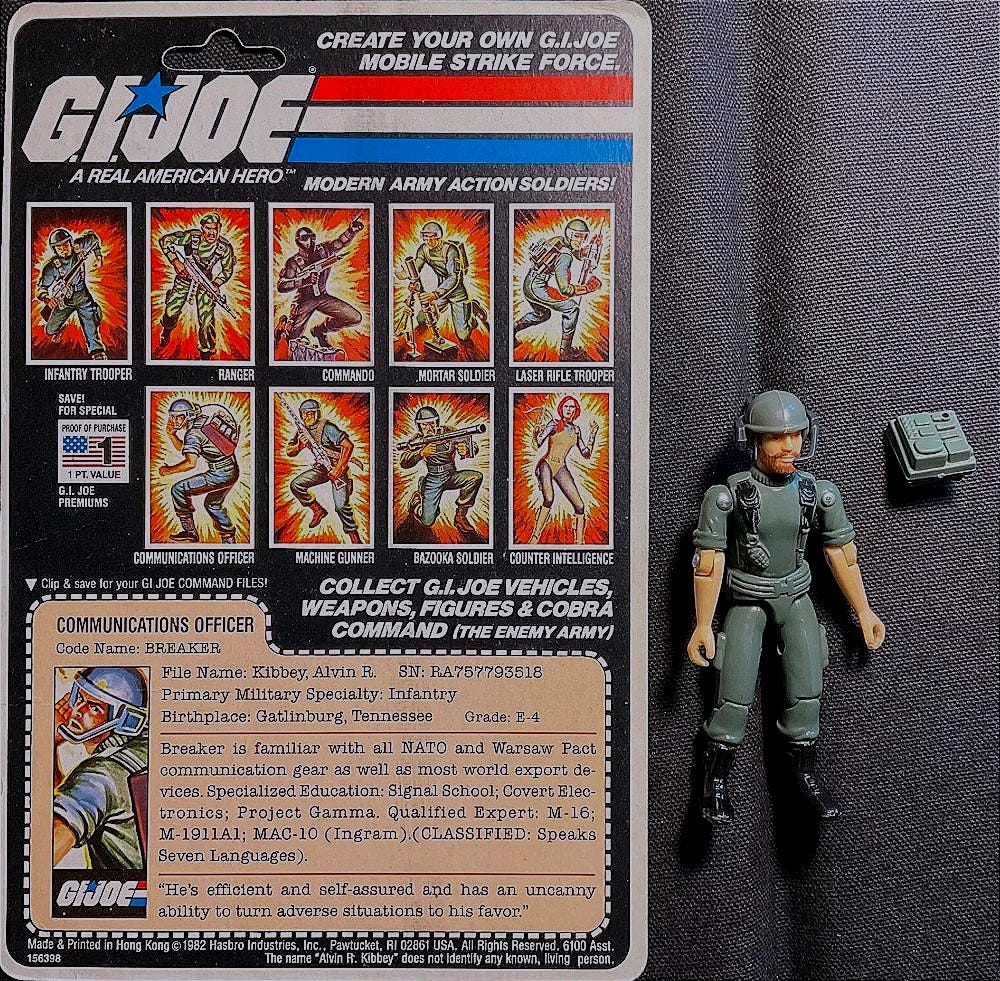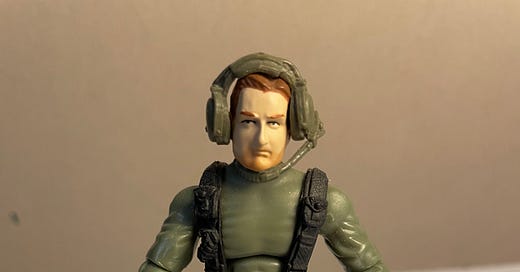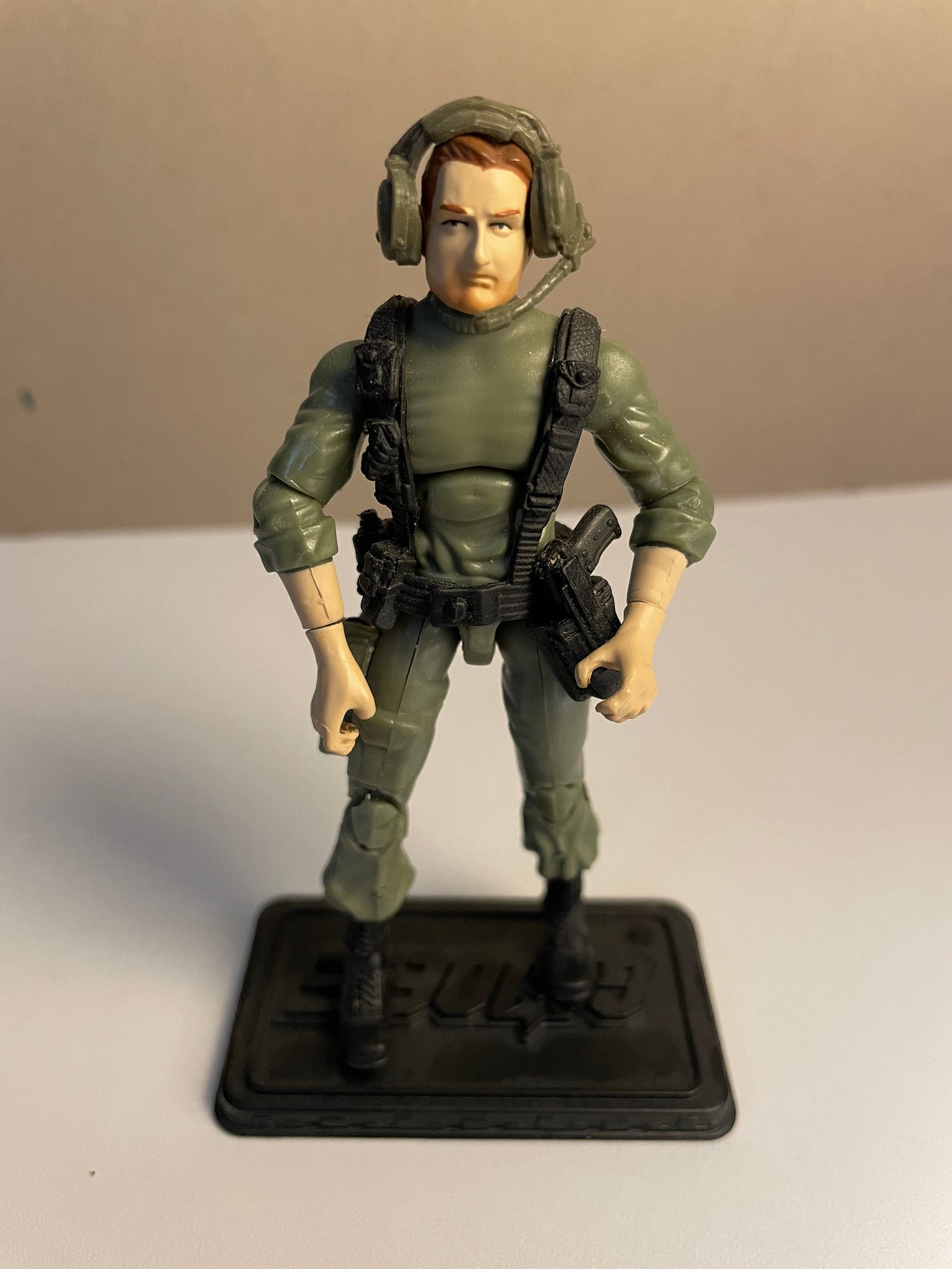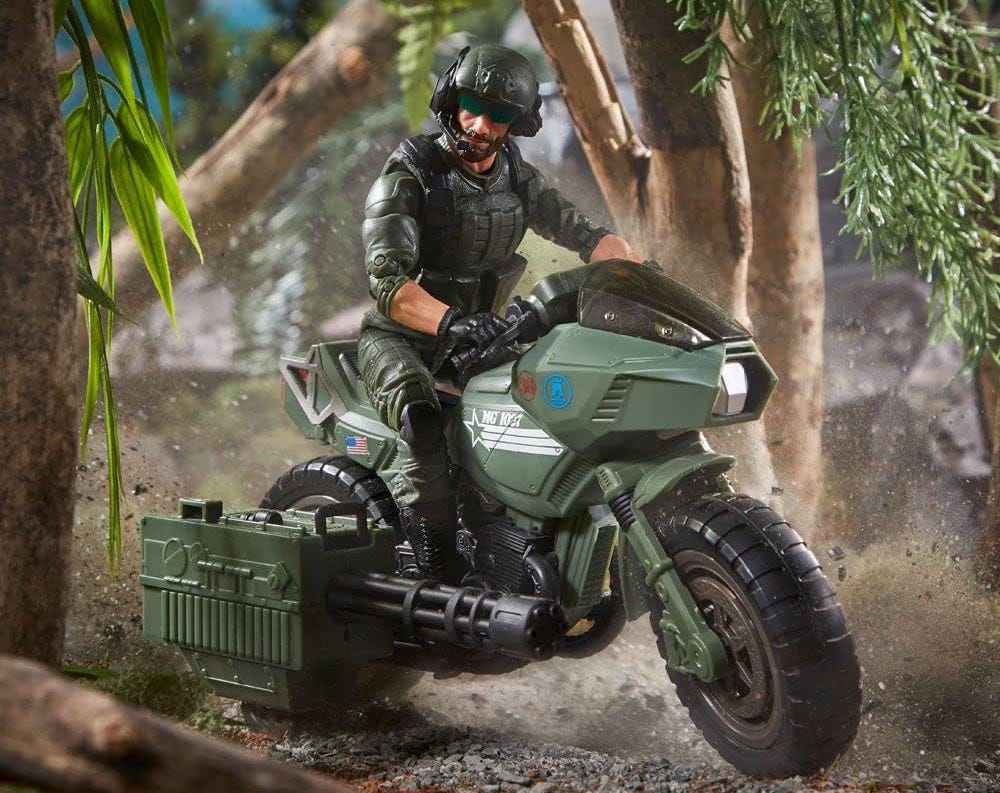Perhaps an odd choice to turn to next, given the razzle-dazzle1 (or more properly, the sexy shadow) of Snake Eyes. But here he is, folks—alphabetically, the very first member of the G.I. Joe Real American Hero line.
Breaker!
Breaker2 is the communications officer, the radio-man. His name seems derived from either a fuse box’s circuit breakers or the “Breaker, Breaker” phrase from CB radio lingo used to cut into a conversation. Either way it’s something that “interrupts” when it comes to electronics—whether that’s the flow of electricity or an electronically carried conversation (which may be a linguistic stretch, but I’ve suffered far worse in NYT’s Connections).
While certain aspects of G.I. Joe are often thought of as near-future tech, Breaker falls into that first wave of figures pulling from Vietnam War-era weapons and tactics. Breaker’s file card even references his involvement with Project GAMMA—which may sound future tech, but was the name of actual covert operations tracking North Vietnamese activity in Cambodia.

An Ode to Accessories
So here’s the thing with Breaker. He was the one carded figure that first wave who did not come with a weapon. He was qualified with, and in the field would have likely carried an M-16 and/or Colt M1911 pistol, but apart from his helmet and backpack, Breaker’s only unique accessory was his headset.
The backpack itself, a “TV Radio Backpack” somehow operated without an antenna, but so be it. I always saw it as more of one of those giant field telephones, routed through Breaker’s headset3.
Still, I liked the future tech idea of it—essentially an early video-phone.
For the most part, the more accessories an action figure came with, the more desirable that figure seemed to me. Snow Job (debuting 1983) got a lot more play from me because of his added skis. Same with Alpine (1985) and his climbing gear.
But these first wave figures (1982) came with, at most, a helmet, backpack, and weapon. Some came with just a weapon (like Stalker and Scarlett, but at least were more unique looking figures compared to the others4). Vehicle drivers had even less—Hawk and Clutch only came with a lousy helmet.
Granted, accessories on the 3 3/4” scale meant pretty good odds of losing them. I remember begging my dad several times to help shift through the contents of a vacuum cleaner bag, looking for some loose gun that mom accidentally hoovered up.
Still, whatever they were, accessories helped establish the cool factor for these figures, and so Breaker definitely would’ve benefited from any weapon as well. He felt lacking otherwise. Literally empty-handed.
In Praise of the Anniversary Line
However!
One of the more brilliant marketing moves came with the brand’s 25th Anniversary line (starting in 2007). Essentially, these were re-releases of the Real American Hero line but with updated sculpting and articulation. A modernized version of these figures.
Which meant that instead of the equipment harnesses and sidearms molded onto the bodies of these figures, there were actual, removable accessories—including tiny sheathes holding tiny knives, and tiny holsters for tiny pistols.
Finally, Breaker had a gun of his own!
The other brilliant move for this line was the fact that 25th Anniversary figures were released on the exact same card packaging from the original Real American Hero line. The same explosive artwork (from Hector Garrido) depicted each figure as dynamically as ever… even an unarmed soldier talking into a headset.
A Place on the Team
As a kid, I always liked carefully equipping each figure with their gear and getting them back into position. I guess it was a way of adding play to the clean-up process. The important thing though, was that each had to have their own gear, whatever they officially came with; Breaker couldn’t just “borrow” a weapon from a buddy on leave or commandeer one from Cobra. Somehow, that just felt wrong.
Likewise, each soldier had their own place on the team. Or position on base. Without a gun of his own, Breaker was often depicted as the de facto driver of the RAM motorcycle (so much so, that he even came with it in the Anniversary and later Classified lines).
Otherwise, he was stationed at the central console back at G.I. Joe Headquarters Command Center (very likely the single greatest toy I ever owned).
It’s Breaker’s role as team comms officer that I want to explore next when it comes to storytelling. Specifically, the role of the “operator”.
Razzle-dazzle is defined as “a flashy display intended to confuse, bewilder, or deceive”. Etymology.com claims it was first used as a fashion term, as seen in a 1889 issue of Clothier and Furnisher magazine: “THE most popular patterns of De Joinville and Ascot scarfs are in the dark backgrounds upon which are the "razzle-dazzle" or irregular and sharp figures that seem to shoot out in erratic tangents every which way. Salesman feels almost as though about to experience the delirium tremens after going through a line of razzle-dazzle patterns.”
You can find that very issue online, and revel in more of the language and fashion advice of the day, such as: “The swell who does not possess at least half a dozen canes is really looked upon in pity nowadays by his fellows.”
You can imagine my deep shame that I do not possess even a single cane. Not even an awesome sword-cane.
Breaker in the Sunbow cartoon was voiced by Chris Collins, the same actor who voiced Cobra Commander (and Transformers’ Starscream), Gung-Ho, and Ripper.
Gratuitous Predator reference: Hawkins, the communications expert, was the first member of the special unit killed by the Predator. His name is also one of the movie’s references found in Stranger Things (along with “Jim Hopper”), used as the name of the fictional town where the series is set.
Amazing how just a few paint steps differentiated these first wave of figures. I never knew how many parts these figures shared, but Breaker has the same upper body as Snake Eyes, and the same head as Rock ‘n Roll. Repurposing parts is apparently the other half of battle.






